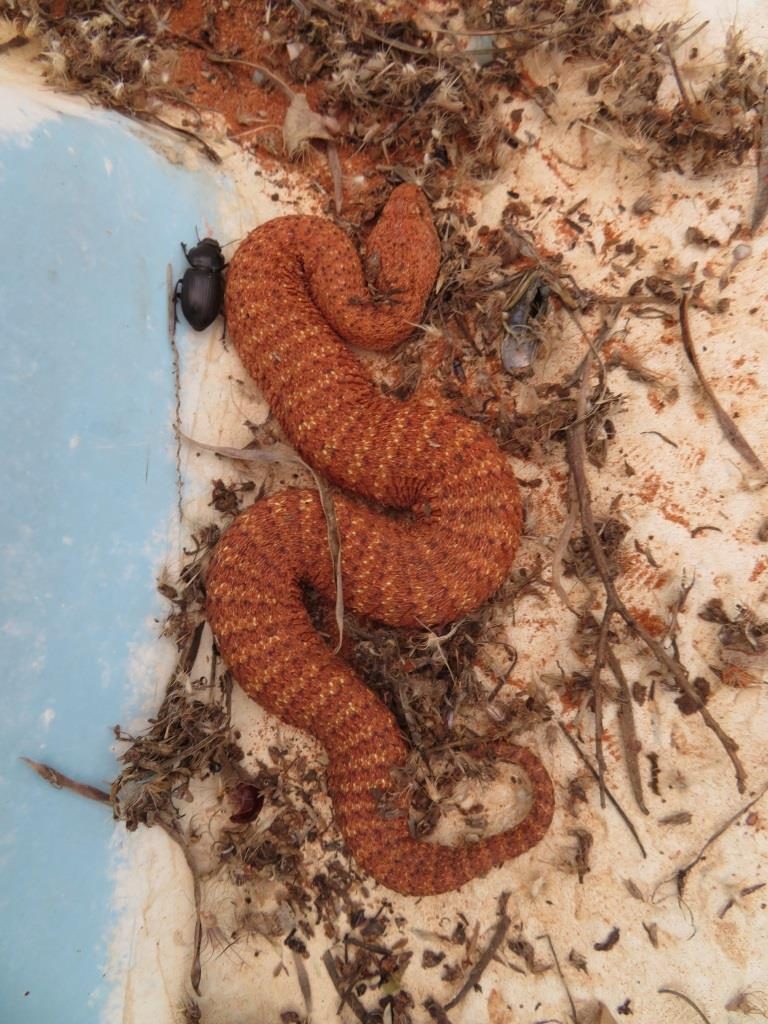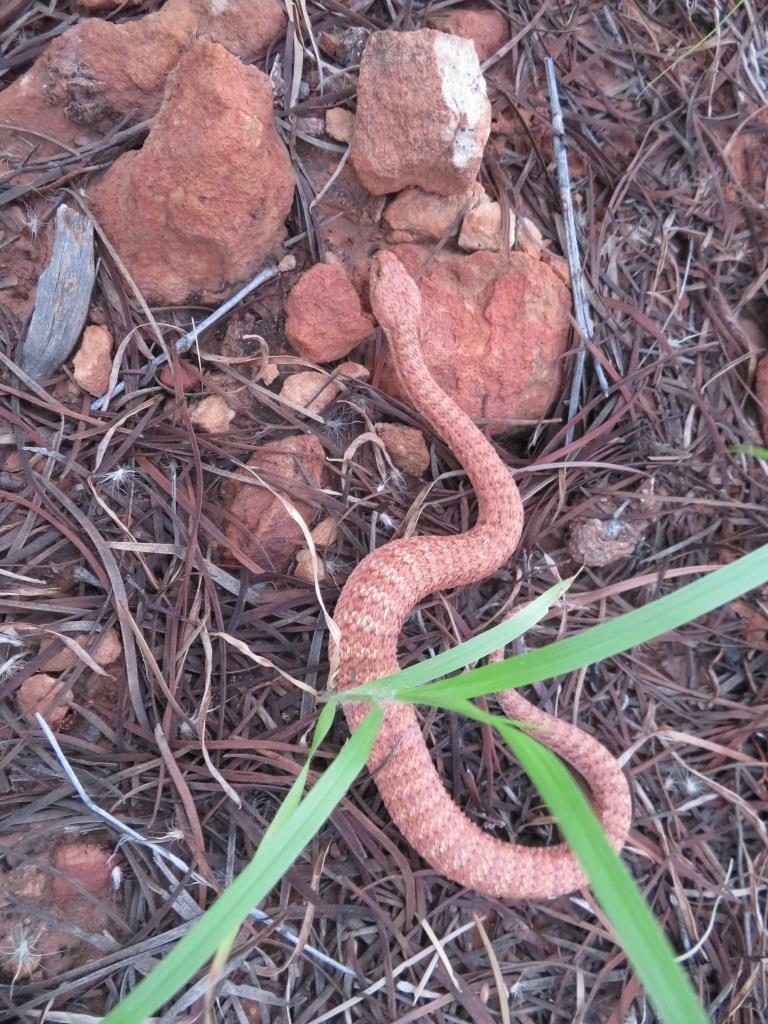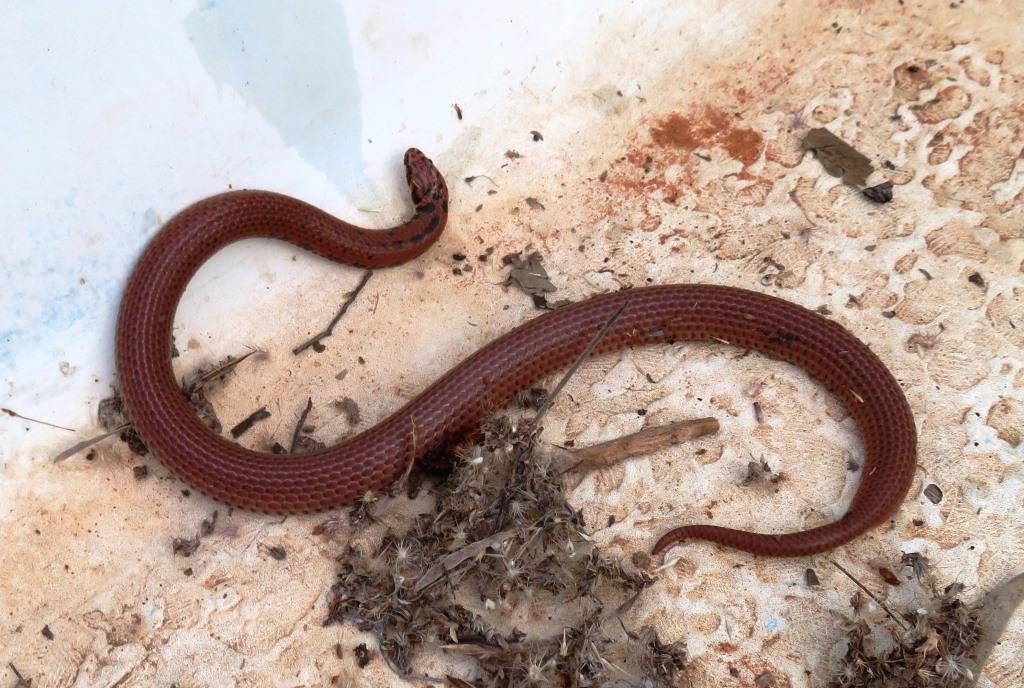By Jeremy Snowdon-James
On a recent Low Ecological Services P/L field trip, out west of Alice Springs, we were lucky enough to come across two beautiful young snakes, a Desert Death Adder (Acanthophis Pyrrhus) and a Little Spotted Snake (Suta punctata); though at first glance we may have missed them both! We were alerted to their presence by staff at the facility we were inspecting.
“Couple of snakes in the pool for ya’s if you want to check them out”
“Ah really?” We asked, “what type?”
“Not sure, one looks like a death adder and the other is more slender, darker. We got them out a few times, but they keep going back in!”
It was early afternoon when we received this information, so after a meal we went to investigate! On first assessment, there were no snakes to be seen in the now largely empty pool. Our disappointment was evident and we figured they must have escaped, not returned or perhaps we had been sold a furphy! But then, just as we were about to give up, we spotted the small reddish brown colour of the Death Adder! It was half hidden beneath leaf litter, pressed against the bottom step; a quarter of the size we were expecting. Quickly our fearless leader picked up a small twig and jumped in to grab it out; highlighting the importance of undergoing some basic snake handling training! After several photos and close inspection, we released the snake up in the surrounding hills, sufficient distance to deter re-entry to the pool trap.
We returned to the pool and looked a bit more, but were unable to find the second snake.
That next morning over breakfast we relayed the information about the Death Adders’ transportation and our lack of luck in finding the other.
“No, it’s in there,” they confirmed. “Saw him just last night, hiding under the drain cap”.
With a belly full of breakfast and fresh morning enthusiasm, we returned to the pool for one last inspection before we headed home. Alas, nothing under the drain cap.
There was a fair amount of leaf litter in a small amount of water caught from rainfall in the bottom of the pool; so, we stirred it up with a stick. And whip, there it was, sneakily hiding within the brush, filling up on frogs and tadpoles! This Little Spotted snake was far less corporative than the Death Adder, as it constantly wiggled and curled its body out from under the stick. Finally, after a 20-minute snake/stick dance, we managed to get it stuck and transported it to the hills!
We installed a fauna ladder (branch, pole, house ladder, whatever is lying around that an animal will be able to use to climb out) into the pool, so that if it happened again, the little creatures can make their own way out. With so much water around after the summer rains, and frogs a plenty, it makes for perfect conditions for snakes to be out hunting. And an out-of-use pool makes for an ideal hunting ground; however, also a perfect trap.
Quite often in the desert when out walking, concern about snakes can get subdued, as you rarely see them. This experienced reminded us all that sometimes we only think about the big snakes, King Browns or Carpet snakes over a meter in length! We probably come across far more snakes than we think, we just have to take the time to look out for the smaller ones; a good local ID book is paramount!
It was a thought I carried with me the following weekend as I took a walk out behind Stanley Chasm. I came across a great little waterhole, with hundreds of tadpoles and small frogs jumping about; thinking this would be a perfect place for a snake. And there it was, subtly hidden beneath the water at first, a beautiful King Brown! Slowly it made its way up out of the water and back into the safety of rocks!
~ Jeremy Snowdon-James
Categories:
Native Fauna, Reptiles


